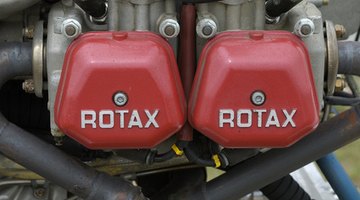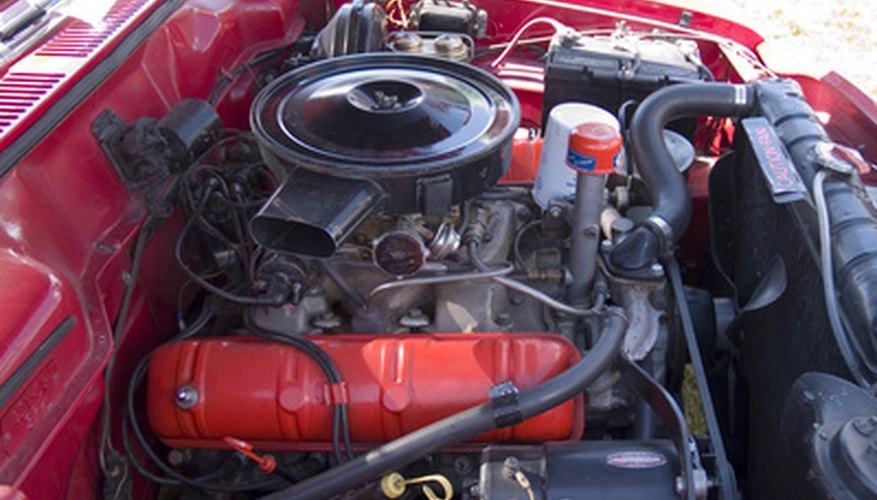Carburettor air leaks, typically known as vacuum leaks, can be one of the most baffling repair problems to solve. Air intake leaks around the carburettor, especially at the throttle body (base), can go undetected because another system usually gets blamed for an engine miss, sporadic rpm behaviour, stalling and sometimes overheating. The normal repair person might think that the ignition system (high-energy ignition or plugs) has caused the symptoms. Hiding just out of reach, the illusive vacuum leak can be detected if you know what to look for.
Idle Speed

An increased and steady idle speed can be one of the best warning symptoms for detecting a carburettor air leak. If attempts to turn down the idle speed adjusting screw have failed (old-make carburettor), it means the blend of air to fuel ratio has changed in favour of too much air passing into the intake manifold. This leans out the fuel mixture which raises the engine speed. The change could be as noticeable as twice the normal engine idle speed.
With fuel injection vehicles, if the air bypass adjustment screw refuses to change the idle speed, it means air has entered the throttle body, also leaning the mixture and raising the rpm.
- An increased and steady idle speed can be one of the best warning symptoms for detecting a carburettor air leak.
- With fuel injection vehicles, if the air bypass adjustment screw refuses to change the idle speed, it means air has entered the throttle body, also leaning the mixture and raising the rpm.
Rough Idle and Stalling
A rough idle, or "loping", which can sound almost like a high performance cam can be a telltale sign that the carburettor or throttle body has allowed a constant flow of air into the intake manifold. Extra air leans the mixture out and fuel can not burn properly when entering the combustion chamber. This causes a constant (lean) misfire. Ruling out an EGR valve that can be stuck or a loose or defective PCV valve, will narrow the problem down to an air leak in the carburettor. A serious leak with massive amounts of air flowing into the system can cause non-idle condition, forcing the use of the accelerator to keep the vehicle running.
- A rough idle, or "loping", which can sound almost like a high performance cam can be a telltale sign that the carburettor or throttle body has allowed a constant flow of air into the intake manifold.
- A serious leak with massive amounts of air flowing into the system can cause non-idle condition, forcing the use of the accelerator to keep the vehicle running.
Extremely lean mixtures caused by air leaks produce excessive HC (hydrocarbons), and such vehicles almost always fail an emission control test.
Hesitation or Engine Miss Upon Acceleration
If the engine "pops" or hesitates upon acceleration from a standing stop, it can be caused by an air leak. Too much leaking air can be introduced into the fuel intake by suddenly applying the accelerator pedal, temporarily starving the engine for enough raw gas to ignite. Other ignition components should be ruled out first, like worn plugs, dirty fuel injectors, a cracked coil, etc,.
Non-adjustable Idle Mixture
Provided the idle mixture adjustment screw looks good (clean needle end) and seats into the carburettor, if it refuses to affect the idle speed at all when turned in, it means that air leakage has bypassed it, making it inoperative.
Noises
With the majority of air leaks around the carburettor and throttle body there will be a detectable hissing noise. It means air has been forced to enter a tight or restricted passage (breach) and a hissing or whistling sound results. Sometimes the hissing noise can be very loud, calling obvious attention to itself.
Vacuum Gauge Measurement
Simply hooking up a vacuum gauge to the carburettor base can identify a "too-lean" condition. Any vacuum measurement that reads below manufacturer's specifications points to an air leak in another part of the carburettor or throttle body.
